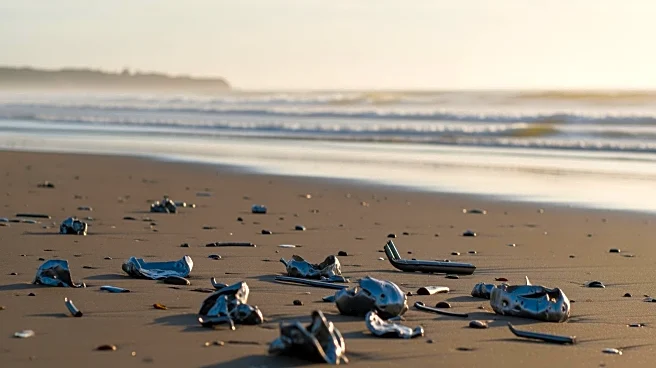What's Happening?
Debris from China's Long March rocket program has been found on the shores of Camiguin Island in the Philippines. The Philippine Coast Guard recovered metallic debris, believed to be from a booster rocket, after local residents discovered it. The debris is part
of a pattern of Chinese rocket waste washing up in the region, attributed to the design and operation of China's orbital launch rockets. The Long March 5B rocket, in particular, has been criticized for its uncontrolled reentry method, which poses risks to ships, aircraft, and other vessels in the drop zone. NASA has criticized this practice, as it is considered risky and is no longer used in the West.
Why It's Important?
The recurring issue of Chinese rocket debris poses significant safety risks to maritime and aviation activities in the region. The uncontrolled reentry of rocket boosters can lead to potential chemical exposure and physical hazards for local communities and vessels. This situation highlights the need for international cooperation and regulation in space activities to ensure safety and environmental protection. The criticism from NASA and other space agencies underscores the importance of adopting safer reentry practices to prevent accidents and environmental damage.
Beyond the Headlines
The presence of rocket debris in the Philippines raises broader questions about the environmental impact of space activities and the responsibility of nations to manage space waste. The situation may prompt discussions on international space policy and the need for stricter regulations on rocket launches and debris management. Additionally, the incident highlights the geopolitical implications of space exploration, as countries navigate the balance between technological advancement and environmental stewardship.















